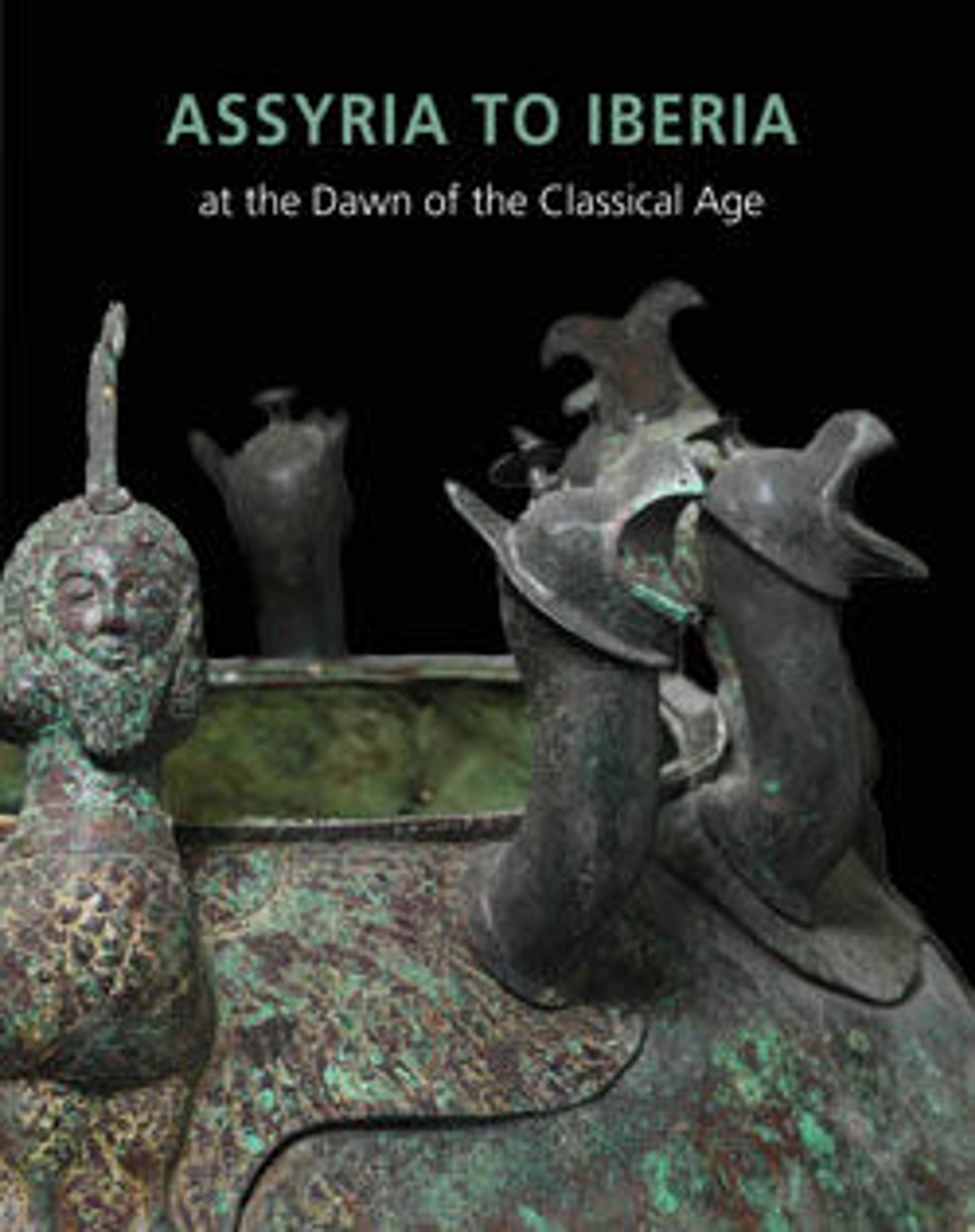Terracotta krater with lid surmounted by a small hydria
Said to be from Kourion, Cyprus
During the eighth century B.C., the Geometric style that had originated in Athens spread throughout the Greek-speaking world. This beautifully proportioned vase found on Cyprus differs in a number of ways from the three monumental Geometric kraters from Attica displayed elsewhere in this gallery. The shoulder is subdivided by four handles rather than two, and the carpetlike decoration was applied over a light ceramic slip ground instead of directly onto the clay. Since the 1870s, scholars have debated where the vase was made; current opinion attributes it to a workshop on Euboea, an island just off the east coast of Attica, rather than to the island of Naxos, in the Cyclades.
In the center panel, between the handles, two stags or goats rise on their hind legs to nibble at a tree. While the graceful long-legged animals are represented in a typically Geometric style, the motif of animals flanking a sacred tree derives from Near Eastern art. The double axes used to fill the space above the horses that face the central panel bring to mind examples from the Minoan culture that flourished on Crete during the second millennium B.C. A number of Minoan bronze votives in this form are displayed elsewhere in the gallery.
During the eighth century B.C., the Geometric style that had originated in Athens spread throughout the Greek-speaking world. This beautifully proportioned vase found on Cyprus differs in a number of ways from the three monumental Geometric kraters from Attica displayed elsewhere in this gallery. The shoulder is subdivided by four handles rather than two, and the carpetlike decoration was applied over a light ceramic slip ground instead of directly onto the clay. Since the 1870s, scholars have debated where the vase was made; current opinion attributes it to a workshop on Euboea, an island just off the east coast of Attica, rather than to the island of Naxos, in the Cyclades.
In the center panel, between the handles, two stags or goats rise on their hind legs to nibble at a tree. While the graceful long-legged animals are represented in a typically Geometric style, the motif of animals flanking a sacred tree derives from Near Eastern art. The double axes used to fill the space above the horses that face the central panel bring to mind examples from the Minoan culture that flourished on Crete during the second millennium B.C. A number of Minoan bronze votives in this form are displayed elsewhere in the gallery.
Artwork Details
- Title: Terracotta krater with lid surmounted by a small hydria
- Artist: Attributed to the Cesnola Painter
- Period: Geometric
- Date: ca. 750–740 BCE
- Culture: Greek, Euboean
- Medium: Terracotta
- Dimensions: 45 1/2 × 22 1/2 in. (115.6 × 57.2 cm)
- Classification: Vases
- Credit Line: The Cesnola Collection, Purchased by subscription, 1874–76
- Object Number: 74.51.965
- Curatorial Department: Greek and Roman Art
More Artwork
Research Resources
The Met provides unparalleled resources for research and welcomes an international community of students and scholars. The Met's Open Access API is where creators and researchers can connect to the The Met collection. Open Access data and public domain images are available for unrestricted commercial and noncommercial use without permission or fee.
To request images under copyright and other restrictions, please use this Image Request form.
Feedback
We continue to research and examine historical and cultural context for objects in The Met collection. If you have comments or questions about this object record, please contact us using the form below. The Museum looks forward to receiving your comments.
